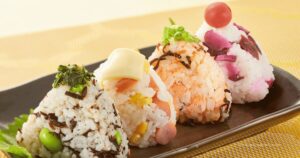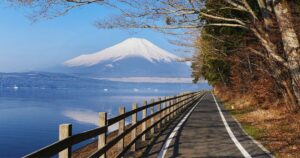Japanese summer weather is hot, humid, and sometimes hard to handle—especially for visitors from cooler or drier countries.
In this article, you’ll learn how Japan’s summer weather changes from month to month, why it feels so humid, and what to expect in different parts of the country.
We’ll also share the best places to visit if you want to enjoy the summer or escape the extreme heat.
Let’s take a closer look at what Japanese summer weather is really like.
Monthly Changes in Japanese Summer Weather
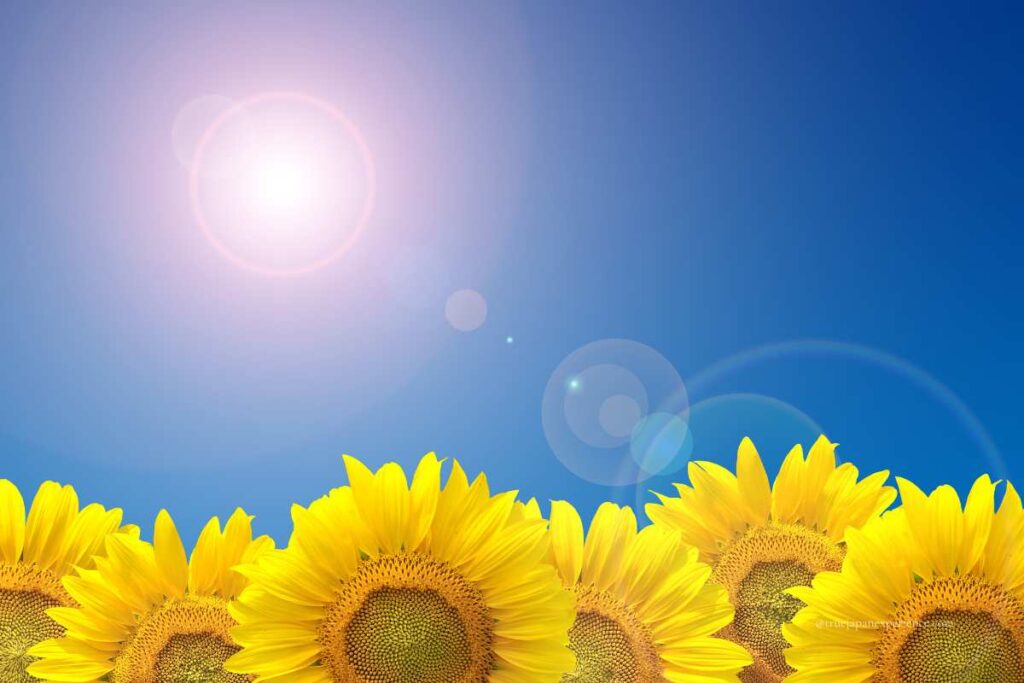
In Japan, summer is from June to August. But now, because of climate change, hot weather often starts in April and continues into October.
In late May, the air starts to feel warm. Some days are hot like summer, but mornings and evenings are still cool and fresh.
In June, the rainy season begins. This time is called tsuyu in Japanese. It rains a lot, and the air becomes very humid. Even if the temperature is not so high, it feels hot and sticky.
In July, the first half is often cloudy or rainy. But in the second half, the rainy season ends, and the real summer begins. The sun becomes strong, and temperatures rise quickly. It gets hot during the day and stays warm at night.
August is the hottest month. In many places, the temperature goes over 35°C (95°F). The humidity is also very high. The air feels heavy, and it’s easy to get tired or sick from the heat.
In September, the weather is still hot, especially in the first half. But slowly, it starts to cool down. However, typhoons often come during this month, so the weather can change suddenly.
Because of these changes, Japanese summer is not just hot—it is also long, humid, and sometimes dangerous. Visitors should always check the forecast and prepare well for the heat.
Main Features of Japanese Summer Weather

Japanese summer weather is not just hot. It is also very humid. In big cities like Tokyo or Osaka, the temperature can go over 33°C (91°F), and the humidity often stays above 75%. Many people say the air feels heavy and sticky, even when they are not moving.
The sunshine is also very strong. UV rays can burn your skin quickly, even on cloudy days. That’s why sunscreen, hats, and sunglasses are important when you go outside.
In Japan, many people also use sun umbrellas in summer. These umbrellas block UV rays and help you stay cool in the sun. Most sun umbrellas are foldable and work for both sun and rain, so they are very useful for travel. You can keep one in your bag and use it when the sun is strong or when it starts to rain.
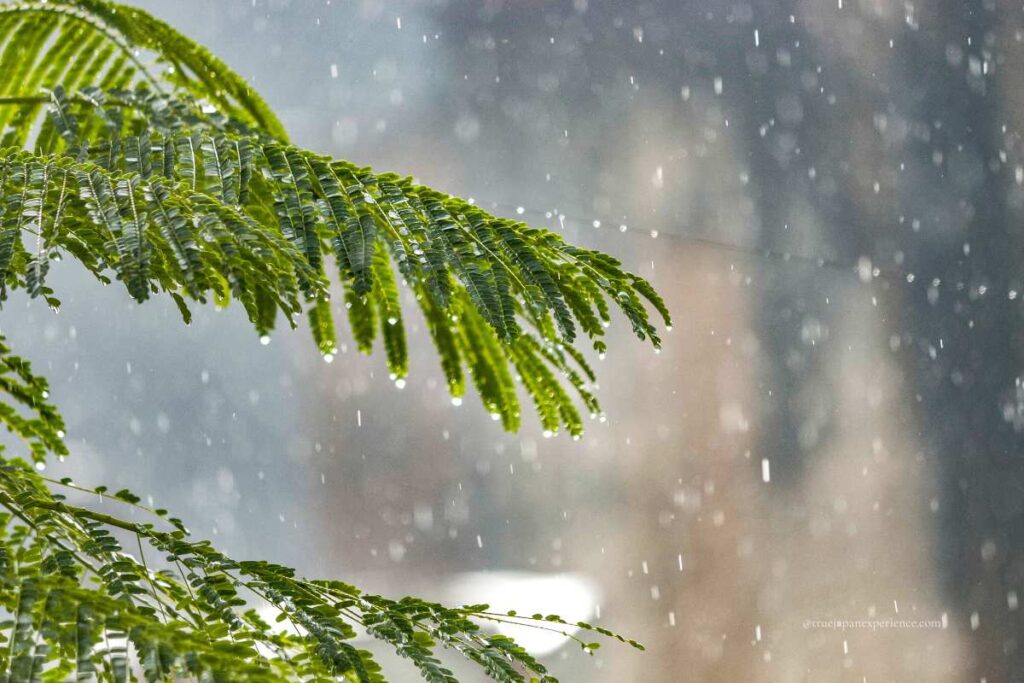
In the afternoon, short but heavy rain can suddenly fall. These are called “guerrilla rainstorms.” Thunder and strong wind may come too, so carrying a small umbrella is a good idea. A sun umbrella that works for rain too is the perfect choice.
From July to September, Japan enters typhoon season. These storms bring heavy rain and wind, and they sometimes delay trains or flights. If you are traveling in summer, always check the weather forecast.
Nights are also hot, especially in big cities. The heat stays in the buildings and roads, making it hard to cool down. This is called the “heat island effect.”
But not all places in Japan feel the same. Hokkaido in the north is much cooler and drier. Okinawa in the south is warm and humid like a tropical island. Where you visit can change your whole summer experience.
Temperature and Humidity by Major Cities
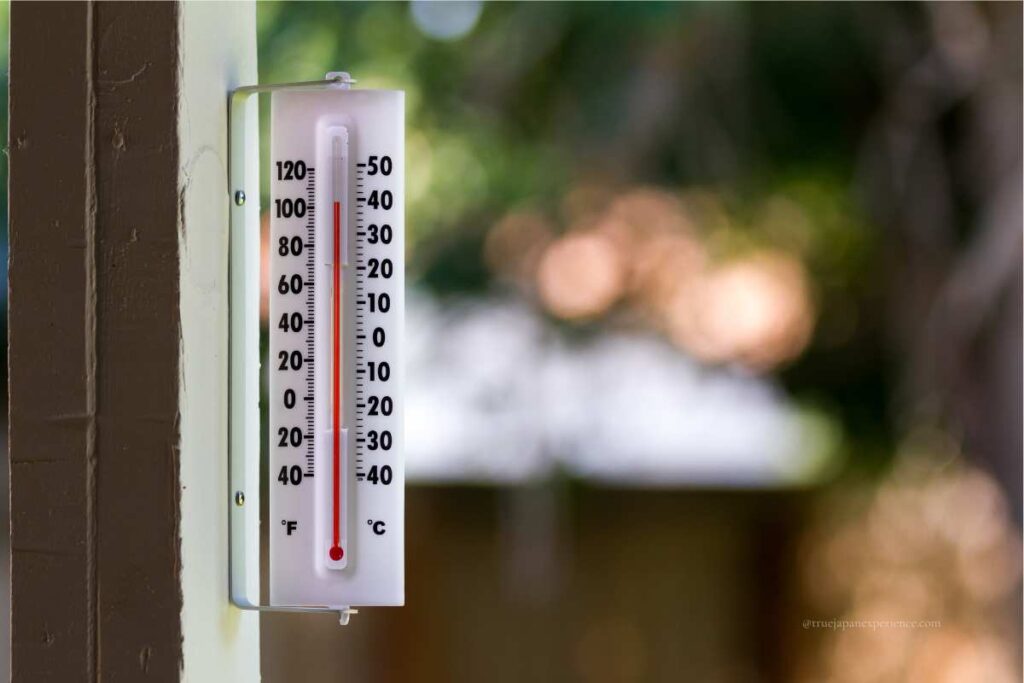
Japan’s summer weather can feel very different depending on where you go.
Northern areas like Hokkaido are much cooler and drier, while big cities such as Tokyo and Osaka feel very hot and humid.
Some places stay warm even at night, and others offer cool breezes, especially in the mountains.
Here’s a quick look at average summer temperatures and humidity in major cities across Japan.
| Month | Sapporo (°C/%) | Tokyo (°C/%) | Osaka (°C/%) | Naha (°C/%) |
|---|---|---|---|---|
| June | 16.6 / 75% | 22.2 / 77% | 23.9 / 74% | 26.7 / 83% |
| July | 20.7 / 80% | 25.7 / 78% | 27.9 / 74% | 28.7 / 83% |
| August | 22.6 / 81% | 27.9 / 75% | 29.4 / 71% | 28.7 / 81% |
| Sept. | 18.4 / 81% | 24.5 / 77% | 25.7 / 73% | 27.7 / 80% |
Data from Japan Meteorological Agency (1991–2020 averages)
These numbers show how much summer conditions can vary from place to place.
But how do visitors from other countries actually feel about Japanese summer?
Let’s take a look at what foreign travelers have experienced.
What Foreign Visitors Say About Japanese Summer
Many people from overseas feel that Japanese summer weather is more difficult than they expected.
For example, one person from Europe said:
“I visited Japan a few times before moving here, but always in spring. My first summer in Japan felt very humid. In Europe, it’s usually dry, so I was surprised.”
In fact, many people say humidity is worse than the heat. They often feel sticky, tired, and uncomfortable—especially in cities like Tokyo, Osaka, and Kyoto.
People from dry countries like the UK or the US often say they were shocked by how humid Japan is. Even when they read about the weather before coming, they still say it felt hotter than they thought.
Is Japan More Humid Than Other Asian Countries?
Not always! Many tropical countries have even higher humidity levels.
Let’s look at some examples:
・Indonesia (Jakarta): Around 80% humidity all year; close to 100% during rainy season
・Malaysia (Kuala Lumpur): Average 81% humidity, with hot weather year-round
・Thailand (Bangkok): Feels like Japanese summer all year long
・Hong Kong: Humidity can go over 90% in summer
・South China (Guangzhou, Chongqing): Very humid with over 75% most of the year
・South Asia (India, Maldives): Some cities have almost 99% humidity every day
So, for visitors from these areas, Japanese summer weather may not feel so extreme.
Instead, they often notice Japan’s dry winters or strong temperature changes between seasons.
Smart Travel Tips for Japan’s Hot and Humid Summer

Japanese summer is not only hot—it’s also very humid.
Many visitors say the humidity is the toughest part. But with a few smart habits, you can enjoy your trip safely and comfortably.
Here are some simple but important tips:
・Avoid the midday sun – Try to explore in the early morning or late afternoon (before 11am or after 3pm).
・Dress for the weather – Wear light, quick-drying clothes. Many locals also carry a small towel to wipe sweat.
・Use sun protection – Don’t forget sunscreen, a hat, and sunglasses. Many Japanese people also use parasols (higasa), which are foldable and great for both sun and sudden rain.
・Stay hydrated – Bring a water bottle or grab a drink from one of the many vending machines.
・Plan for sudden rain – Carry a compact umbrella or light rain jacket just in case.
・Pick cool places to visit – Shady shrines, riversides, mountains, and indoor museums are great choices.
With a little planning, you can stay cool and enjoy everything Japan has to offer—even in the heat!
Where to Go in Japan for a More Comfortable Summer
Yes, Japanese summer can be hot and humid—but that doesn’t mean you have to stay indoors.
In fact, there are many places across Japan where you can enjoy a refreshing and cool summer experience.
Whether you want to escape the city heat or enjoy nature at a slower pace,
here are some of the best places to visit in Japan during the summer months.

Hokkaido – Furano, Hakodate, and more
Hokkaido is the coolest region in Japan during summer. In places like Furano, you’ll see purple lavender fields in full bloom around July. The air is dry, the wind feels fresh, and nights are even a little chilly. It’s a great place to relax and breathe.
Tohoku – Aomori, Oirase Gorge
Tohoku is quieter than many tourist areas and full of green mountains and rivers. Oirase Gorge is one of the best spots to enjoy cool walking trails along the stream. Even in the middle of summer, it feels peaceful and comfortable in the shade of the forest.
Want to explore more about Aomori in summer?
Check out our guide:
👉 Aomori in August: Experience the Nebuta Festival and Refresh at Oirase Gorge
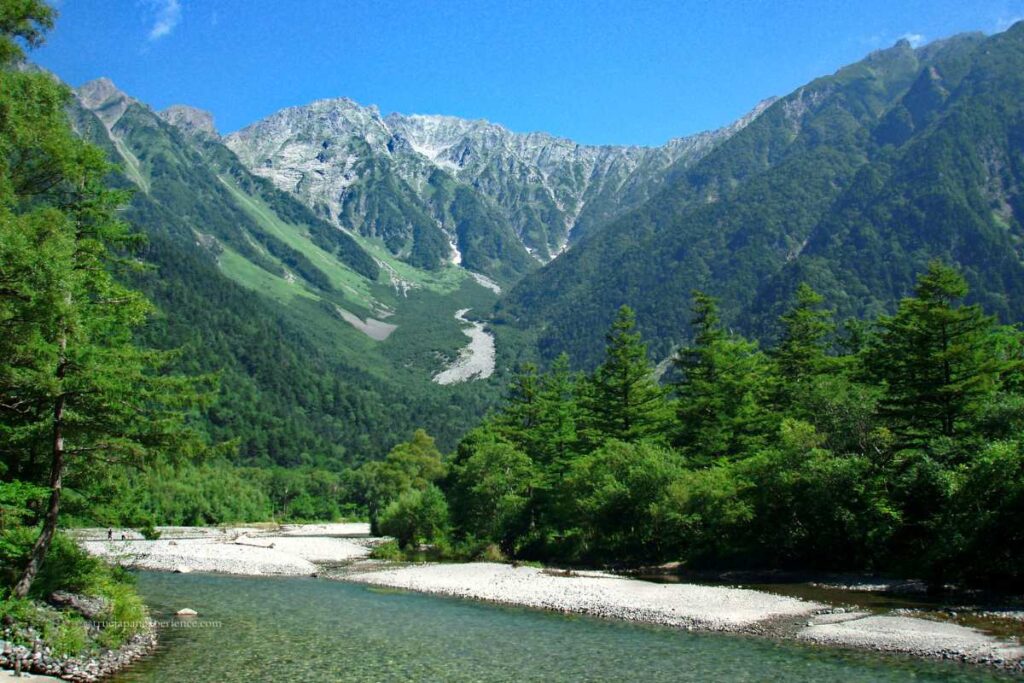
Nagano – Karuizawa, Hakuba
These mountain areas are famous for clean air and mild temperatures. Karuizawa has a stylish town feel with cafés and shops, but it’s much cooler than Tokyo. In Hakuba, you can hike through the mountains and enjoy the cool breeze even in August.
Tochigi – Nikko, Nasu Highlands
Just a few hours from Tokyo, Tochigi’s highlands are a good escape from the city heat. Nikko has quiet forests, lakes, and old shrines, and Nasu offers open skies and soft mountain air. Make sure to stay in the highland areas though—city spots like Utsunomiya can still be hot.
Ready for a Cool Summer in Japan?
Japan’s summer has many faces. You can experience dry, fresh mountain weather in the north—or enjoy the tropical sea breeze in Okinawa.
Wherever you go, picking the right place can make your summer trip much more comfortable. Don’t let the heat stop you—choose the place that fits your style and enjoy summer your way.

